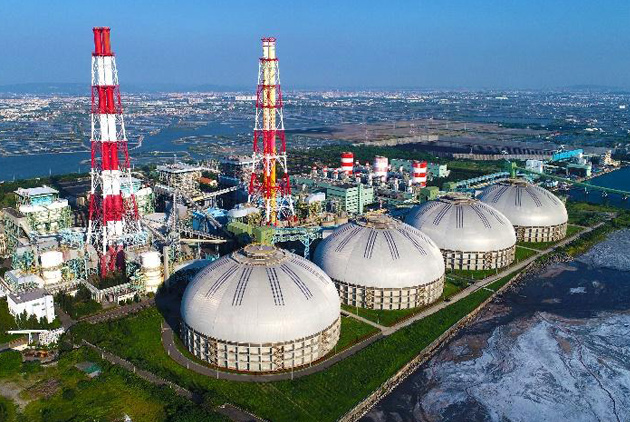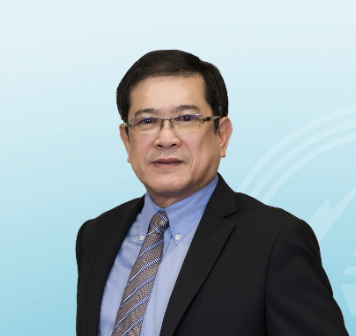How can Taipower lead Taiwan into carbon neutrality?

Source:Taipower
As Taiwan’s biggest electricity provider, Taipower is responsible for leading the country towards low-carbon power. Read about Taipower’s three strategies to facilitate a low-carbon transformation.
Views
How can Taipower lead Taiwan into carbon neutrality?
By Wei-Fuu Yangweb only
According to NASA, the year 2020 tied 2016 as the warmest year on record at 1.02 degrees warmer than the 1951-1980 mean baseline. As climate change continues to affect the world, governments are actively adopting new environmental strategies. The United States, the EU, and Japan have all pledged to achieve carbon neutrality by 2050. To reach full decarbonization by 2050, electric utilities such as Italy’s Enel Group and Spain’s Iberdrola have calculated emissions reduction pathways through the Science-Based Targets initiative (SBTi). Additionally, in November of 2020, the United States announced both a $2 trillion “clean energy revolution” and a pledge to use 100% of clean electricity by 2035. Japan's Marubeni Corporation and Kansai Electric Power Company have also halted plans to build new coal-fired power plants in alignment with Japan’s carbon neutrality target.
As Taiwan’s biggest electricity provider, Taipower is responsible for leading the country towards low-carbon power. To achieve this aim, Taipower has established three strategies to facilitate a low-carbon power transformation:
1. Energy structure transition:
Taipower is prioritizing the development of renewable energy, promoting low-carbon power, and adjusting the ratios of various types of power generated to improve generation efficiency. This strategy brings Taipower in line with the government’s aims of expanding the use of renewables, increasing the capacity of natural gas (LNG) power generation, reducing coal consumption, and achieving nuclear phase-out.
Consequently, by 2025, Taipower will have increased the proportion of power generated from LNG to around 50% and the proportion of renewable energy to 20%. It will also have upgraded coal-fired units into gas cycle units and be monitoring the use of nuclear plants. At the same time, Taipower will develop the digital infrastructures necessary to ensure that power grids are stable and can keep up with demand. Through these initiatives, Taipower will aggressively continue to reduce carbon emissions.
2. Development of alternative fuels:
Taipower is developing its use of non-fossil fuels with lower carbon emissions such as biomass energy, hydrogen energy, biogas, bio-hydrogen production, ammonia energy, etc.
This is done in conjunction with research and development in technologies and processes such as mixing ammonia with coal, and the application of hydrogen mixed with natural gas.
(Source: Taipower)
3. Carbon capture, utilization & storage (CCUS) technology:
Taipower has been developing Carbon Capture, Utilization & Storage (CCUS) technologies to eliminate a portion of the carbon dioxide produced through thermal power generation.
Ensuring the sustainability of both energy and resources is essential when transforming the power industry. As governments and corporations continue to emphasize the importance of reaching carbon neutrality, Taipower is striving to assist Taiwan in achieving its decarbonization target by 2050 through energy transition and a circular economic framework. The development of digitalization and shift towards a circular economy are necessary components for achieving the three goals mentioned.
Digital transformation to change the energy structure
Digitalization is key to successfully reshaping power generation. Renewable energy is intermittent and often unpredictable. This variability greatly affects both the operation and dispatch of power from generation facilities. A digital transformation that allows for real-time information and advanced analytics will enhance the stability of the power supply.
While the challenges posed by renewable energy certainly exist, energy storage and smart grids offer two viable solutions to combat these problems. Energy storage systems possess fast frequency control capabilities, which could help support a system with a high percentage of renewable energy, smooth power supply curves, and ensure an electricity supply even when there is no sunshine or wind.
One of the advantages of a smart grid is its flexibility. Users, for example, are better informed of their real consumption. As such, the integration of smart grids with energy storage facilities allows utilities to overcome the intermittent nature of renewable energy sources.
In a smart grid, sensors are deployed where renewable energy is generated, transmitted, and stored. These provide real-time renewable energy generation and consumption data. In conjunction with an energy storage system, a smart grid enables instant power demand reduction when renewable energy dips and power storage when excess energy is generated.
Power can also be transmitted to where it is needed and fluctuations can be lowered.
(Source: Taipower)
The Kinmen Island’s wind and solar conditions make it suitable for renewable power generation. As such, Taipower selected Kinmen to be Taiwan’s first "smart low-carbon demonstration island" for smart grid integration.
Taipower incorporated energy storage with a smart grid in a system that not only stores renewable energy, but also adjusts the system frequency and stabilizes the renewable power supply. If an unexpected power failure occurs, such as a tripped circuit breaker, the system could provide an instant power rescue within 0.2 seconds – thousands of times faster than a traditional backup system.
(Soure: Taipower)
Using circular economy to reach carbon neutrality
While measures have been taken to help consumers reduce their individual carbon footprints, power companies must also reduce the carbon footprint of their operations. A traditional utility’s cradle-to-grave life cycle includes mining, manufacturing, use, and waste. This consumes excessive resources and creates vast amounts of waste.
As resources run out and waste management produces emissions, the linear business model power companies have relied on must transform into a circular one. The emphasis circular economy places on minimizing waste makes it essential in achieving carbon neutrality. As such, Taipower has developed a circular economic blueprint which consists of strategies and action plans for both resources and energy.
Taipower is still at the beginning of energy transition and carbon minimization, but while the challenges continue to increase in scale, they are far from insurmountable.
A transformation of this scale is inherently cross-sectoral and requires engagement with stakeholders across value chains in pursuit of innovations that contribute to a resilient and low-carbon future. Cooperation is the key to creating a win-win situation for both the economy and the environment. We are all responsible for moving Taiwan along the pathway of carbon neutrality.
About the author:

Wei-Fuu Yang is Chairman of Taiwan Power Company (TPC) since late 2017. Before joining TPC, Yang has served as Vice Minister of the Ministry of Economic Affairs (MOEA) for almost three years. His responsibility was coordinating the affairs of water resources, energy, state-owned enterprise, mines, geological survey, and information technology. Over a period of 35 years earlier, he worked in the water-related agencies and participated in a lot of public construction projects.
Have you read?
♦ When will Taiwan go Carbon Neutral?
♦ Achieving supply chain sustainability from supply network design
♦ How can the Legislative Yuan accelerate SDGs in Taiwan?
Uploaded by Penny Chiang






